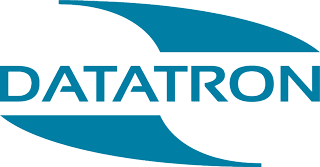How do you Automate the Invoice Process?
Processing invoices can be time-consuming for any business. However, with technological advancements, automation has become more accessible.
Automated invoice processing uses OCR and Artificial Intelligence (AI) to seamlessly move invoices through your organisation, preparing them for payment without manual intervention.
In this blog, we break down the stages of end-to-end invoice automation.
Process Automation
Process automation involves technology to extract and process invoice data, making AP tasks faster and more efficient. By actioning OCR, machine learning, and artificial intelligence, context is derived from images of your invoices to perform decision-based accounting actions, such as:
- Coding: AI determines the type of invoice and uses this information to assign general ledger coding by cross-referencing with your CRM database.
- Matching: Did you get what you ordered? Are you being appropriately charged? Does it match what you received? Matching ensures appropriate payments by referencing documents like purchase orders and delivery notes.
- Validation: Sometimes, you need still need a human touch. Because OCR operates to a confidence level it recognises novel and unique case invoices and routes them for manual validation. From this interaction it learns, when dealing with a similar instance next time it will process automatically.
Workflow Automation
Workflow automation ensures a reliable, consistent, and compliant flow of invoice data through your organisation. Automating invoice workflows accelerates AP department integration with company-wide tasks, such as HR and records management.
- Vendor Portals: Self-service portals allow vendors to submit invoices electronically, accelerating the speed at which invoice information enters your finance system.
- Approval: Approvers are notified that invoices are ready to be seen. Once approved, they are automatically moved to the next stage in the workflow.
- Retention: Invoice processing software recognises how long an invoice must be archived based on the extracted information. Invoices are then stored securely until they are required to be destroyed.
Report Automation
How long does it take to process an invoice? How many invoices can be processed in a day? How much does it cost to process an invoice?
Measurable goals and performance indicators are essential for measuring success and provide valuable insights into the effectiveness of your invoice process. Automated processing software can generate reports to track many metrics, such as:
- Processing Time: Reports can show how long invoices take to move through your system.
- Cost per Invoice: Reports show the cost of processing per invoice.
- Access: Reports can be used to show users' actions on invoices.
- Payment schedules: Reports can track your debts and plans for transparent payment.
Improvement Opportunities: The actions of digital information through automatic processes are recorded in an audit trail. The audit trail and reporting functions work together to identify bottlenecks and areas where costs can be reduced.
In summary
Automating the invoice process, and taking the extra steps to automate workflow and reporting, is an effective way to streamline and optimise your operations. Implementing a computerised invoicing system not only automates a repetitive manual task, but it can also reduce processing time, reduce errors, improve compliance, and provide valuable insights into the effectiveness of your internal methods.
Start your digital transformation today

